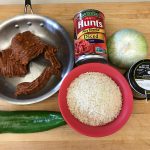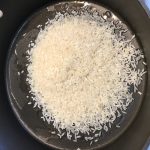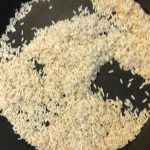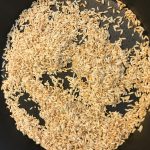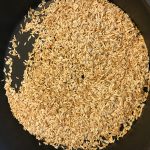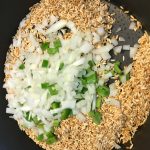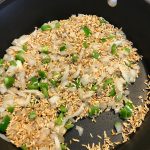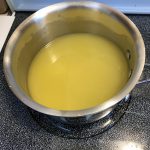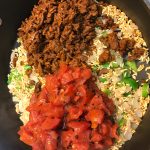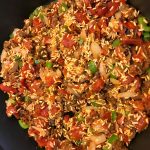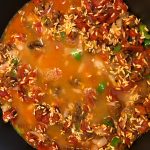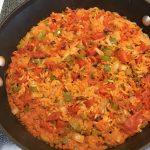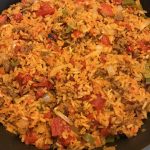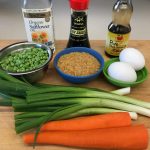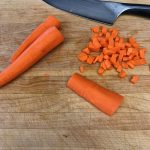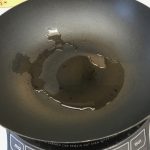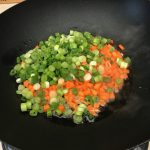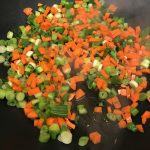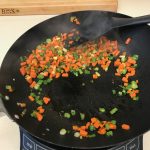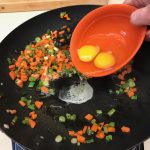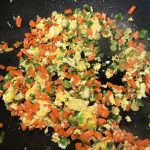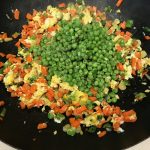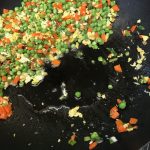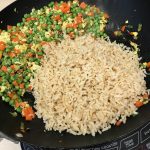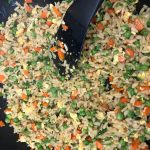By Chris Watson
Rice is, by far, the most under rated and underutilized staples in American kitchens. Why? Because we have, via our food lexicon, regaled it to “ethnic” or “international” foods rather than a “regular” meal base. It doesn’t help that we have instant and packaged varieties that are not only tasteless but nutritionally marginal (the less said about Rice a Roni and Minute Rice the better). However, for the smaller household (and certainly larger ones) rice is a great starch and grain alternative. By sticking to natural and brown varieties, rice deserves to move up the scale of serving options from “rarely” to “definitely”.
Rice FAQ
It isn’t like rice isn’t available in our markets. Although we normally think of rice as being grown in Asia (and it certainly is) the United States grows a fair amount. According to the World Fact Book (published by of all agencies the CIA) the US is the 3rd largest exporter of rice in the world, behind India and Thailand.
Certainly, rice is a viable option as starches go. It is, of course, naturally gluten free. It is an excellent base for a whole variety of dishes, and not just the ones we think of when we shop in the “International” isle of the mega mart. A scoop of rice is often served in the middle
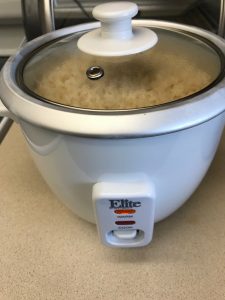
of a bowl of chili in the south. Plus, we have all had rice and beans, rice with anything Asian, and the ubiquitous rice served with most Mexican and Tex-Mex meals. Finally, most of us have had the bland “rice pilaf” that may or may not have one grain in a thousand of wild rice (which isn’t really rice) served at restaurants. This, unfortunately, is our exposure one of the oldest food staples of human culture.
However, there is a huge variety of rice dishes that open a vast landscape of culinary and meal options. Etouffee, dirty rice, congee, fried rice, risotto, gumbo, jambalaya, lemon rice, paella, Spanish rice, Mujaddara, chicken and rice, and Arroz con Pollo (Spain, Caribbean, and south American versions of chicken and rice). These are just the dishes and preparations that the spell checker didn’t blow up over. In other words, rice is useful.
Cooking Rice
Way too many web sites have hours of videos and words about how to cook rice. Rice, as it turns out, needs to be in some way boiled in liquid. That is it. There are techniques, like when doing risotto or Spanish rice, that may or may not lead to a better consistency, but rice isn’t all that hard. In general, for brown or white rice use one cup of rice and two cups of water. Yes brown rice is better for you than white. For more information check out Authority Nutrition. These ratios hold true for cooking rice on the side or cooking rice in a flat pan, as in Spanish rice.
Want to take the guess work out? Buy a rice cooker. Rice cookers are the best way to cook either white or brown rice with no guess work. Don’t buy some combo rice cooker, steamer, crock pot, dehydrator etc. machine. Buy a basic rice cooker that will handle up to 2 cups of
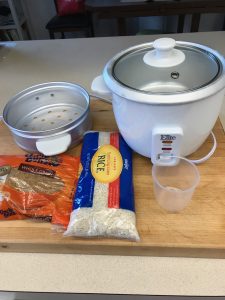
uncooked rice. That is plenty for our size household and the cooker is easy to store. Most rice cookers come with a steamer rack. In a smaller rice cooker you might as well throw it away. It is too small to be very useful.
It cannot be emphasized enough: buy a small rice cooker. They are shockingly cheap and open the door to using rice. Just follow the directions for the amount of rice you want to cook and plug it in. Make sure you get a cooker that will shift from cooking to “warm” when the rice is done. That way you don’t even have to set a timer.
What follows are two basic preparations for rice, one with white and one with brown. These are very basic styles of cooking rice that, if mastered, help us navigate to a wider array of rice options. The bottom line is that rice is almost tailor-made for the smaller household. It is easy to store, easy to cook, and doesn’t suffer any consequences from cooking in smaller quantities. So join the 3.5 billion people who eat rice daily! You will be glad you did.
Mexican Rice
This recipe uses chorizo and a Anaheim pepper. Anaheim’s are not very hot (less so than jalapeño). You can also just use some hot sauce or, if you like thing hot, scale up the pepper. Chorizo has some spice as well. Of course, you can omit the meat altogether (and use a vegetable stock instead of chicken) for a vegetarian version of this dish. You can also experiment with other spices, like curries, other sausages, italian seasonings and jerk seasonings to change the flavor profile. The basic dish remains the same. The reduction in liquid from the traditional two to one is because of the addition of a can of tomatoes. If you don’t like “chucks” you can add 1/2 cup of tomato sauce (or puree the can of tomatoes in a blender prior to adding). Do not underestimate the value of toasting the rice until fully brown. This is a big part of the final texture and flavor. Likewise, make sure your stock is HOT (As in boiling). This also is critical to the final texture. Finally, we don’t recommend this dish with brown rice.
- 1 cup long grain white rice
- 1½ cups chicken stock (or vegetable) boiling
- ½ lbs chorizo, cooked, drained, and patted with a paper towel to remove excess oil
- 1 can fire roasted tomatoes, diced
- 1 jalapeno (or ½ Anaheim) finely diced
- 1 medium onion, chopped
- 2 tbs oil (higher smoke point like canola or safflower)
- Cook the chorizo in a small pan. Fully drain and pat down with a paper towel to remove excess oil
- Place rice and oil in a large skillet over medium heat
- Stir rice to coat and "toast" rice in pan until the rice turns a deep, golden brown. Stir constantly as the rice will burn. 10-15 minutes depending on the heat and pan
- Add onion and pepper and sautéed until onion starts to go translucent
- Add chorizo and tomatoes and stir
- Pour in the hot broth and stir to incorporate.
- Cover and reduce heat to medium low to simmer rice. Cook for 15 minutes
- This makes three very health servings. This rice dish holds and reheats well.
Fried Rice
A restaurant standard completely achievable at home. Plus you can make it with brown rice which is amazing. We cooked the rice in the rice cooker then chill (if the rice is still hot throw it on a sheet pan and put it in the freezer for 10-15 minutes). Cold rice seems to work better when making this dish (you can always cook the rice the day before or just use left over rice from a different dish). Obviously you can add a variety of stir fried proteins, like shrimp, chicken, pork, and beef. However, there is something very basic and appealing about the vegetable version of this dish. You can omit the eggs if you are going for a strictly vegan version of the dish. Although we do use frozen peas in this dish we do not recommend the same for carrots. Fresh carrots are so easy to dice or grate and they are far superior in texture to frozen. Finally, we really like green onion for this dish but any onion will do in a pinch. If you don’t have a wok that is ok. You can use a large flat pan.
- 2 cups cooked brown rice, cold
- 2 eggs
- 1 bunch green onions chopped
- ½ to 1 cup frozen peas, rinsed
- 1-2 carrots, diced small
- 1 tbs soy sauce
- 3 tbs water
- 2-3 tbs high heat oil (like safflower)
- Sesame oil, Sriracha sauce, chopped cilantro to garnish if desired
- Heat wok and oil to smoke point
- Add carrots and stir fry for two minutes
- Add onions and stir fry for one minute
- Push vegetables aside and crack the two eggs in the middle of the wok. Rapidly scramble and cook then incorporate with the vegetables.
- Add peas and stir fry for one minute
- Add cold rice (it seems the texture is better if the rice is cold prior to going into the hot wok) and stir fry for 3-5 minutes. Rice will start to brown.
- Add soy sauce and water and cook until water evaporates. This will "fluff" up the rice
- Add more soy sauce along with sesame oil, hot sauce, more chopped green onion, cilantro, as garnish and serve






